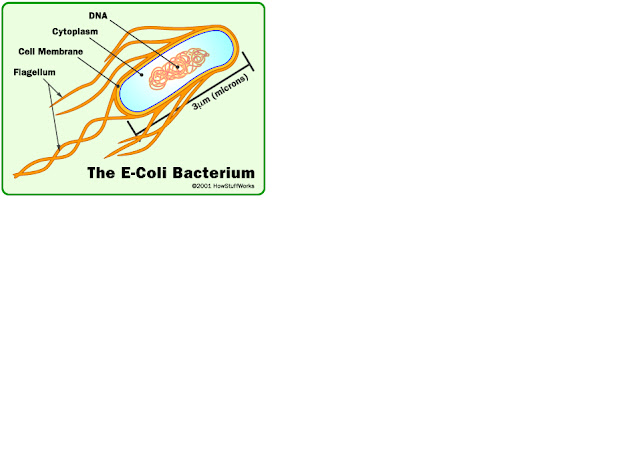Escherichia coli
E. coli Infection
E. coli is short for Escherichia coli -- bacteria (germs) that cause severe cramps and diarrhea. E. coli is a leading cause of bloody diarrhea. The symptoms are worse in children and older people, and especially in people who have another illness. E. coli infection is more common during the summer months and in northern states.
How can I catch E. coli infection?
Most E. coli infections come from:
- Eating undercooked ground beef (the inside is pink)
- Drinking contaminated (impure) water
- Drinking unpasteurized (raw) milk
- Working with cattle
Healthy beef and dairy cattle may carry the E. coli germ in their intestines. The meat can get contaminated with the germ during the slaughtering process. When beef is ground up, the E. coli germs get mixed throughout the meat.
The germ can also be passed from person to person in day care centers and nursing homes. If you have this infection and don't wash your hands well with soap after going to the bathroom, you can give the germ to other people when you touch things, especially food.
People who are infected with E. coli are very contagious. Children shouldn't go to a day care center until they have 2 negative stool cultures (proof that the infection is gone). Older people in nursing homes should stay in bed until 2 stool cultures are negative.
The germ can also be passed from person to person in day care centers and nursing homes. If you have this infection and don't wash your hands well with soap after going to the bathroom, you can give the germ to other people when you touch things, especially food.
People who are infected with E. coli are very contagious. Children shouldn't go to a day care center until they have 2 negative stool cultures (proof that the infection is gone). Older people in nursing homes should stay in bed until 2 stool cultures are negative.
What are the symptoms of E. coli infection?
Symptoms start about 7 days after you are infected with the germ. The first sign is severe abdominal cramps that start suddenly. After a few hours, watery diarrhea starts. The diarrhea causes your body to lose fluids and electrolytes (dehydration). This makes you feel sick and tired. The watery diarrhea lasts for about a day. Then the diarrhea changes to bright red bloody stools. The infection makes sores in your intestines, so the stools become bloody. Bloody diarrhea lasts for 2 to 5 days. You might have 10 or more bowel movements a day. Some people say their stools are "all blood and no stool."
How is E. coli infection diagnosed?
The diagnosis is made by finding E. coli in a stool culture. If you have bloody diarrhea, see your doctor as soon as possible. Your doctor will do a culture to find out if you have E. coli in your intestines. The culture has to be taken in the first 48 hours after the bloody diarrhea starts.
How is the infection treated?
There is no special treatment, except drinking a lot of water and watching for complications. Don't take medicine to stop diarrhea unless your doctor tells you to. This medicine would keep your intestines from getting rid of the E. coli germ. If you are seriously dehydrated, you might need to go to the hospital to have fluids put into your veins with na IV.


No comments:
Post a Comment